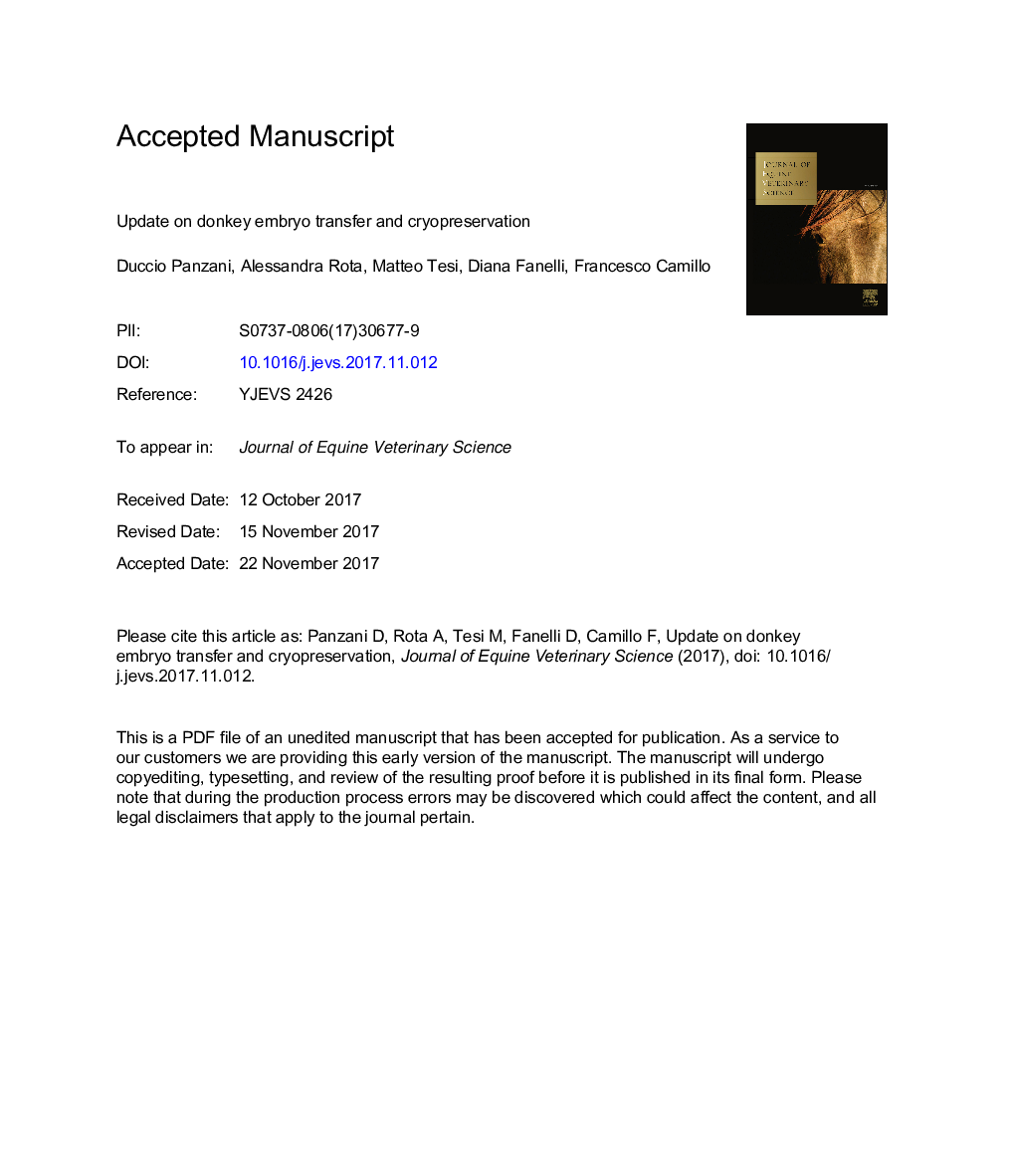| Article ID | Journal | Published Year | Pages | File Type |
|---|---|---|---|---|
| 8483068 | Journal of Equine Veterinary Science | 2018 | 19 Pages |
Abstract
Donkey species reproductive biotechnology studies had a dramatic increase after the Convention of Biological Diversity that took place in Rio de Janeiro (Brazil) in 1992. The mechanization of agriculture of the 20th century took most of the developed countries donkey breeds close to extinction, and after Rio, the development of effective reproductive programs to save them was encouraged. Moreover, the recent interest in donkey milk, meat, and skin products transformed the donkey in a potential productive animal leading to the research and dissemination of desired productive tracts into its population. Among reproductive biotechnologies, the production and cryopreservation of embryos has a key role due to the possibility of producing and stocking valuable genetics potentially forever. Each species gametes and embryos from each species need specific media and protocols due to their particular characteristics. After more than 10Â years of unsatisfactory results, embryo transfer and cryopreservation in the donkey moved from horse protocols to procedures more specifically tailored to the donkey species. Nowaday, pregnancy rates of 50% and 36% after the transfer of fresh and vitrified embryos, respectively, are possible in this species.
Keywords
Related Topics
Life Sciences
Agricultural and Biological Sciences
Animal Science and Zoology
Authors
Duccio Panzani, Alessandra Rota, Matteo Tesi, Diana Fanelli, Francesco Camillo,
